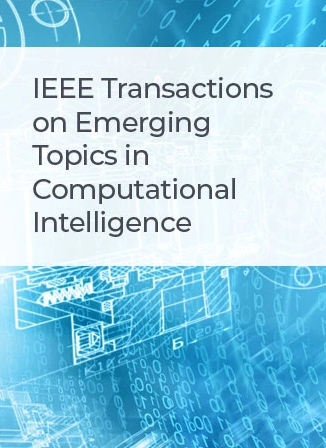金发姑娘原则:为长尾分类实现恰到好处的边界保真度
IF 5.3
3区 计算机科学
Q1 COMPUTER SCIENCE, ARTIFICIAL INTELLIGENCE
IEEE Transactions on Emerging Topics in Computational Intelligence
Pub Date : 2025-04-14
DOI:10.1109/TETCI.2025.3551950
引用次数: 0
摘要
本研究解决了深度神经网络中从长尾类不平衡中学习的挑战,特别是在图像识别方面。当数据集的类分布高度倾斜时,就会出现长尾类不平衡,一些头部类包含许多实例,而许多尾部类具有更少的实例。当传统的分类方法,特别是深度学习模型,优先考虑更频繁的类别的准确性,而忽略了不太常见的类别时,这种不平衡就会出现问题。此外,这些方法很难保持一致的边界保真度——决策边界足够清晰,可以区分类,但又足够平滑,可以很好地进行泛化。硬边界通常由尾类的过度拟合引起,它放大了类内的变化,而过于软的边界模糊了类之间的区别,降低了分类的准确性。我们提出了一个带有共享特征提取器的双分支网络来克服这些挑战。该网络使用实例和中位数采样器对头部和中等类别和反向采样器对尾部类别。此外,我们实现了一个专门的损失函数作为特征正则化器,以降低模型在分类过程中对不相关的类内变化的敏感性。这个损失函数动态调节特征表示对齐,促进类内结构的内聚和类间分离。为了实现这一点,我们的框架包含了两个关键组件:双分支采样器引导的混合(DBSGM)和自适应类感知特征正则化(ACFR),它们一起工作以平衡类表示并细化决策边界。在训练期间集成DBSGM和ACFR有助于形成与类语义一致的决策边界。为了确保类边界的适当定义,我们在ACFR模块中提出了温度自适应监督对比损失(TASCL),在平滑和锐利之间实现了适当的平衡。我们的单阶段端到端框架展示了显著的性能改进,为深度学习中长尾类失衡的挑战提供了一个有希望的解决方案。本文章由计算机程序翻译,如有差异,请以英文原文为准。
The Goldilocks Principle: Achieving Just Right Boundary Fidelity for Long-Tailed Classification
This study addresses the challenges of learning from long-tailed class imbalances in deep neural networks, particularly for image recognition. Long-tailed class imbalances occur when a dataset's class distribution is highly skewed, with a few head classes containing many instances and numerous tail classes having fewer instances. This imbalance becomes problematic when traditional classification methods, especially deep learning models, prioritize accuracy in the more frequent classes, neglecting the less common ones. Furthermore, these methods struggle to maintain consistent boundary fidelity—decision boundaries that are sharp enough to distinguish classes yet smooth enough to generalize well. Hard boundaries, often caused by overfitting tail classes, amplify intra-class variations, while overly soft boundaries blur distinctions between classes, reducing classification accuracy. We propose a dual-branch network with a shared feature extractor to overcome these challenges. This network uses instance and median samplers for head and medium classes and a reverse sampler for tail classes. Additionally, we implement a specialized loss function as a feature regularizer to reduce the model's sensitivity to irrelevant intra-class variations during classification. This loss function dynamically modulates feature representation alignment, promoting cohesive intra-class structures and clear inter-class separations. To achieve this, our framework incorporates two key components: Dual-Branch Sampler-Guided Mixup (DBSGM) and Adaptive Class-Aware Feature Regularizer (ACFR), which work together to balance class representation and refine decision boundaries. Integrating DBSGM and ACFR during training helps shape decision boundaries that align with class semantics. To ensure class boundaries are appropriately defined, we propose the temperature-adaptive supervised contrastive loss (TASCL) within the ACFR module, achieving the right balance between smoothness and sharpness. Our single-stage, end-to-end framework demonstrates significant performance improvements, offering a promising solution to the challenges of long-tailed class imbalances in deep learning.
求助全文
通过发布文献求助,成功后即可免费获取论文全文。
去求助
来源期刊

IEEE Transactions on Emerging Topics in Computational Intelligence
Mathematics-Control and Optimization
CiteScore
10.30
自引率
7.50%
发文量
147
期刊介绍:
The IEEE Transactions on Emerging Topics in Computational Intelligence (TETCI) publishes original articles on emerging aspects of computational intelligence, including theory, applications, and surveys.
TETCI is an electronics only publication. TETCI publishes six issues per year.
Authors are encouraged to submit manuscripts in any emerging topic in computational intelligence, especially nature-inspired computing topics not covered by other IEEE Computational Intelligence Society journals. A few such illustrative examples are glial cell networks, computational neuroscience, Brain Computer Interface, ambient intelligence, non-fuzzy computing with words, artificial life, cultural learning, artificial endocrine networks, social reasoning, artificial hormone networks, computational intelligence for the IoT and Smart-X technologies.
 求助内容:
求助内容: 应助结果提醒方式:
应助结果提醒方式:


